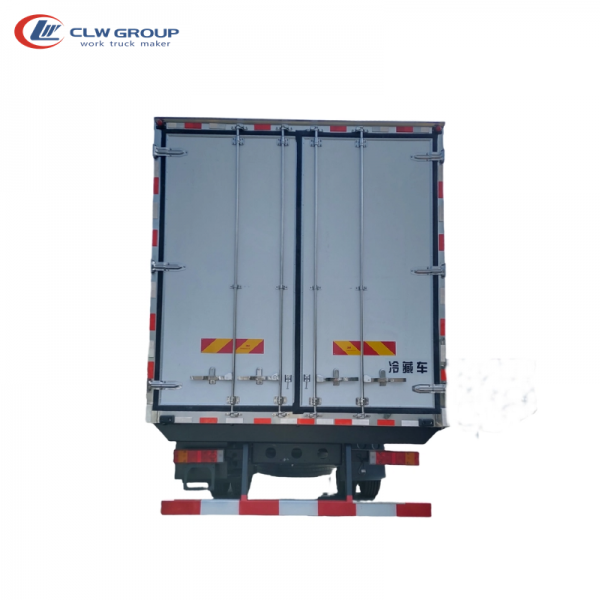Analysis of Boom Truck Cost of Ownership A Comprehensive Guide

Introduction
Boom trucks are essential equipment in various industries such as construction, telecommunications, utilities, and tree care. They are versatile machines that combine the functionality of a crane and a bucket truck, making them valuable assets for businesses that require lifting and aerial access capabilities. However, owning and operating a boom truck comes with significant costs beyond the initial purchase price. In this article, we will delve into the various aspects of boom truck cost of ownership, including acquisition costs, maintenance expenses, insurance, depreciation, financing, and other factors that contribute to the overall financial impact of owning a boom truck.
Acquisition Costs
The initial purchase price of a boom truck is one of the most substantial expenses associated with owning this equipment. The cost of a boom truck can vary widely depending on several factors, including the brand, model, lifting capacity, reach, and additional features such as hydraulic outriggers, material handling attachments, and platform options. New boom trucks can range from $100,000 to over $500,000, while used models can be purchased for significantly less, depending on their age, condition, and specifications.
When considering the acquisition cost of a boom truck, it is crucial to factor in any additional expenses such as delivery charges, taxes, registration fees, and dealer markup. Buyers should also consider the long-term value of the equipment, its expected lifespan, and the potential return on investment in terms of increased efficiency, productivity, and revenue generation.
Maintenance and Repairs
Maintaining a boom truck in optimal condition is essential to ensure safe and efficient operation. Regular maintenance tasks such as lubrication, inspections, and minor repairs can help prevent costly breakdowns and extend the lifespan of the equipment. However, maintenance costs can add up over time, especially for older boom trucks or those subjected to heavy use in harsh environments.
Typical maintenance expenses for a boom truck include routine service intervals, replacement of wear parts such as hydraulic hoses, filters, and bearings, as well as periodic inspections for compliance with safety standards and regulations. Major repairs, such as engine overhauls, hydraulic system rebuilds, or structural repairs, can be particularly expensive and may require the services of specialized technicians or authorized dealers.
Insurance
Insuring a boom truck is a crucial aspect of protecting the asset and mitigating financial risks associated with accidents, theft, vandalism, or other unforeseen events. Insurance premiums for boom trucks can vary depending on factors such as the value of the equipment, its intended use, the operator's experience and driving record, and the coverage limits and deductibles selected.
Common types of insurance coverage for boom trucks include liability insurance to cover damages to third parties or property, physical damage coverage to protect against theft or damage to the equipment itself, and workers' compensation insurance to provide benefits for employees injured on the job. Additional coverage options such as equipment breakdown insurance, rental reimbursement, or roadside assistance may also be available to enhance the protection of the boom truck and its operators.
Depreciation
Like any other capital asset, a boom truck depreciates in value over time due to wear and tear, obsolescence, and market conditions. Depreciation is a non-cash expense that reflects the decline in the value of the equipment and is typically accounted for in financial statements and tax filings. The rate of depreciation for a boom truck can vary depending on factors such as its age, condition, usage, and market demand for similar equipment.
Understanding the depreciation of a boom truck is essential for financial planning and decision-making, as it affects the equipment's book value, resale value, and overall cost of ownership. Businesses may choose to depreciate their boom trucks using methods such as straight-line depreciation, accelerated depreciation, or bonus depreciation, depending on tax regulations and accounting principles.
Financing

Many businesses choose to finance the purchase of a boom truck through loans, leases, or other financing arrangements to spread out the upfront cost over time and preserve cash flow for other operational expenses. Financing options for boom trucks can vary depending on factors such as creditworthiness, down payment amount, term length, interest rates, and collateral requirements.
Common financing options for boom trucks include traditional bank loans, equipment financing from specialized lenders or manufacturers, lease agreements with fixed or variable payments, and alternative financing solutions such as equipment rental or lease-to-own programs. Businesses should carefully evaluate the terms and conditions of financing offers to determine the most cost-effective and suitable option for acquiring a boom truck.
Operational Costs
In addition to the aforementioned expenses, owning and operating a boom truck incurs various operational costs that contribute to the overall cost of ownership. These costs can include fuel consumption, insurance premiums, registration fees, licensing and permit expenses, operator training and certification, storage and parking fees, taxes, and administrative overhead.
Businesses should carefully estimate and budget for these operational costs to ensure that they can afford to maintain and operate a boom truck effectively without compromising safety, compliance, or profitability. Proper planning and financial management are essential to optimize the return on investment and maximize the benefits of owning a boom truck for business operations.
Conclusion
Owning a boom truck can be a significant investment for businesses in various industries that rely on lifting and aerial access capabilities to perform essential tasks efficiently and safely. Understanding the cost of ownership of a boom truck is essential for making informed decisions about acquiring, maintaining, and operating this equipment while managing financial risks and maximizing returns.
By analyzing the various aspects of boom truck cost of ownership, including acquisition costs, maintenance expenses, insurance, depreciation, financing, and operational costs, businesses can develop comprehensive financial strategies to optimize the performance and profitability of their boom truck assets. With careful planning, budgeting, and monitoring of expenses, businesses can successfully navigate the financial challenges and opportunities associated with owning a boom truck and achieve long-term success in their operations.
